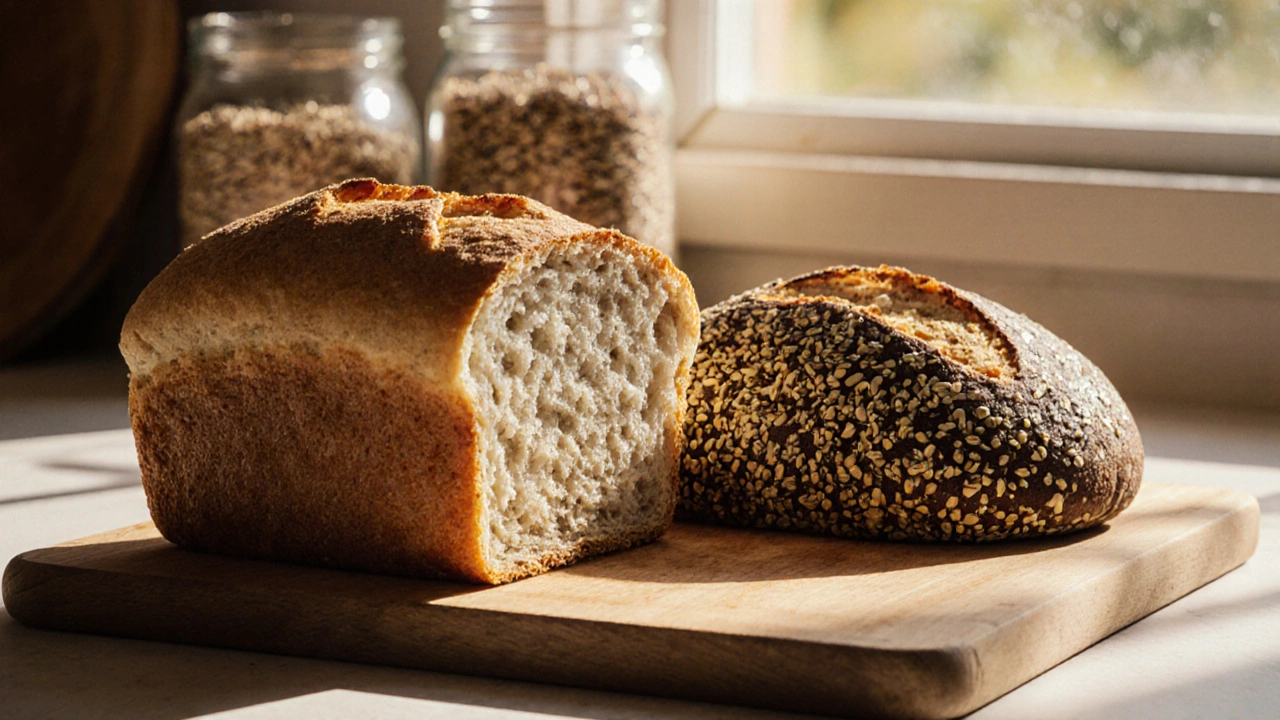Stop Eating Gluten: How Your Body Changes and What to Expect
Discover the short‑term and long‑term effects on your body when you stop eating gluten, with tips for a balanced gluten‑free diet.
When working with gluten, a stretchy protein found in wheat, barley and rye that gives dough its elasticity. Also known as gliadin, gluten can trigger digestive issues for many people. stop eating gluten isn’t just a trend; it’s a lifestyle shift that can improve energy levels and gut health for anyone sensitive to this protein.
Pairing gluten with a gluten‑free diet, a way of eating that excludes all sources of gluten while focusing on whole, naturally gluten‑free foods creates a clear path to symptom relief. The diet is especially critical for those with celiac disease, an autoimmune condition where gluten intake damages the small intestine. For celiacs, even tiny traces of gluten—known as cross‑contamination—can spark flare‑ups, so strict label reading becomes a daily habit.
Understanding the relationship between gluten, wheat flour, and common substitutes helps you shop confidently. Wheat flour, the most common gluten carrier, can be swapped with almond flour, a low‑carb, nutrient‑rich alternative made from finely ground almonds or rice flour, a neutral‑tasting starch ideal for crisp batters. These alternatives retain texture without the protein that causes trouble.
First, identify hidden gluten sources. Many sauces, soups, and processed snacks list “modified food starch” or “hydrolyzed vegetable protein” without specifying the grain source. A quick online lookup or a glance at the ingredient list can save you from accidental exposure. Second, set up a dedicated gluten‑free pantry. Store oats in sealed containers away from wheat products, and keep separate toasters or cutting boards if you share a kitchen. Third, experiment with simple recipes that highlight natural flavors—think roasted vegetables, grilled fish, and fresh fruit salads. They prove you don’t need wheat‑based carbs to enjoy delicious meals.
When baking, the science changes a bit. Gluten provides structure, so you’ll often add binders like xanthan gum or psyllium husk to mimic that stretch. For example, a chocolate cake made with almond flour benefits from a teaspoon of xanthan gum to hold the crumb together. This tweak mirrors the semantic triple: gluten‑free baking requires binders to replace gluten’s structure. Another triple: cross‑contamination influences health outcomes for celiac patients. Recognizing these connections lets you troubleshoot texture issues faster.
Dining out? Scan menus for symbols like “GF” or ask staff about preparation methods. Many restaurants now pre‑prepare gluten‑free dough, but it’s wise to confirm there’s no shared fryer oil. If you’re unsure, choose naturally gluten‑free options such as grilled meats, salads, or rice‑based dishes. This habit reinforces the triple: gluten‑free diet enables safe social eating when restaurants follow strict protocols.
Beyond food, lifestyle factors matter. Stress can amplify gut sensitivity, so regular exercise and adequate sleep support the body’s healing process. Keep a simple food journal to note any symptoms after meals; patterns often emerge that guide future swaps.
All of these tips, from pantry organization to binder tricks, feed directly into the collection of articles below. You’ll find detailed guides on gluten‑free dessert swaps, label‑reading cheat sheets, and even a look at popular sweets that are naturally gluten‑free. Dive in to turn the theory into everyday practice and keep your meals both safe and satisfying.

Discover the short‑term and long‑term effects on your body when you stop eating gluten, with tips for a balanced gluten‑free diet.